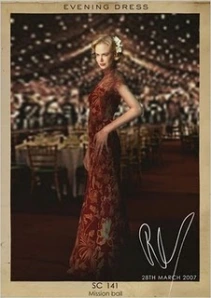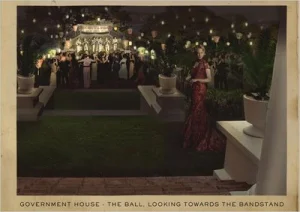
Shanghai Nostalgia” as a Cultural Industry by Pan Tianshu
Shanghai Nostalgia: Historical Memory, Community-Building, and Place-making in a late Socialist City
Pan, Tianshu. “Historical Memory, Community-Building and Place-Making in
Neighborhood Shanghai.” in Restructuring the Chinese City: Changing Society, Economy, and Space, ed. Laurence J. C. Ma and Fulong Wu, 122–37. London: Routledge 2005.
“For the first time in post-Mao Shanghai, the local people found their colonial past was no longer baggage to carry but a rich resource to be fully utilized. “Shanghai nostalgia” thus “became entangled with a (dys)utopian fervor to embrace global capital and its ideology, the appearances and normalcy of the Shanghai modern entered intellectual and commercial circulation at the standard version of historical memory” (Zhang 2000: 354). Shanghai quickly became a “re-colonized” site for various kinds of joint ventures in film production. Old buildings in the Municipal Concession and small villas in the west end were renovated in order to attract more Spielbergs and boost the tourist industry. Those sinified cafes and European restaurants that somehow managed to survive communism changed their names back to their original western names. The famous Red Mansion Coffee House, for example, was once again Chez Louis. So did the theaters, movie houses, department stores, and dance halls. The Old Man Jazz Band, who had a brief appearance in Spielberg’s movie, started to perform all year around in the Peace Hotel (Sasson House, previously owned by a famous Jewish billionaire). Colonial Shanghai rekindled collective memory and in the process of remembering, itself was re-invented. With its success in the colonial past in setting trends, finding opportunities, and witnessing miracles, Shanghai provided a somewhat “infectiously decadent, but alluring background and setting” (Dai 1997: 158) especially for those working in the film industry.”
Zhang, Xudong. 2000. “Shanghai Nostalgia: Postrevolutionary Allegories in Wang Anyi’s Literary Production in the 1990s”, in Positions: East Asia Cultures Critique, pp. 348-387. Duke University Press.
“Selling cosmetics by vending machine?”
April 19th, 2008
“In Japan you can find all sorts of things for sale in vending machines. Since I’ve lived in Hong Kong however, I’ve never seen an explosion of this sort of retailing in the city. So it came as a surprise to encounter a lonely looking vending machine while walking through Silvercord shopping center last week. The vending machine had a traditional 1920’s era graphic of two girls covering the outside.
“The image looked like a cigarette ad from old Shanghai, the type that tourists purchase on “antique” posters featuring beauties from the time period. On closer inspection, the image actually represented the logo of a brand of cosmetics, Two Girls.
“This sort of vintage look doesn’t really match a vending machine. Vending machines typically denote a sort of modern, mechanized and impersonal shopping experience. You don’t normally associate this type of experience with female shoppers. Further, a product like cosmetics would usually require the purchaser to read the labels and check the ingredients, which isn’t possible from inside a machine. Typical products that are sold in this way are ultra well known products. Perhaps the cosmetics are well known, however if I were a shopper unfamiliar with the brand, not being able to read the label and study the product would be a major impediment to sale.
“The location of the machine was also somewhat off. It was buried near the side of an escalator in an alternative entrance to the shopping center…”
“Yet another factor to consider, does the product match the target consumer of the youth-oriented Silvercord mall?
“So in essence, the product, the brand image, the target consumer, the location of the machine and the technology all need to be considered when selling a product by vending machine. In this case, the factors appear to be a bad match.”
http://www.hongkonghustle.com/shopping/389/cosmetics-vending-machine/#more-389 Posted 19 April 2008 [Accessed 10 February 2009]
Shanghai Chic or Aboriginal Chic ?
Shanghai chic or Aboriginal chic ? Baz Luhrman (dir.) and Catherine Martin’s (production/costume design) AUSTRALIA http://www.australiamovie.net/are deeply indebted to Australian indigenous artists Tracy Moffatt’s “Something More” photographic works – that resemble a film still series, and clearly channel the old 1930s Shanghai lady mojo…… http://www.roslynoxley9.com.au/artists/26/Tracey_Moffatt/75/. © copyright Tracey Moffatt, Something More # 1, 1989, series of 9 images, Cibachrome, 98 × 127cm
This thread has been explored in a recent fashion blog that articulates the Shanghai lady mythos in Baz Luhrman’s epic AUSTRALIA: “How to create 1930s Shanghai glamour” http://theproseccolife.blogspot.com/2009/01/how-to-create-1930s-shanghai-glamour.html posted Thursday, January 8, 2009, [Accesses 10 February 2009]
“How to create 1930s Shanghai glamour”
“Darcy took me out to see Australia last night – and boy, what an epic! Sweeping scenery, soaring soundtrack, cattle drives, the Stolen Generations, World War II, and a reprehensible villain to top it off…But what really caught my eye were the costumes, created by Baz Luhrmann’s wife Catherine Martin. When Nicole Kidman’s character had to dress more elegantly, her costumes often had a distinct “1930s Shanghai” aesthetic to them that is discussed in this slideshow.
“The basic lines and structure of the cheongsam, also called a qipao, have remained essentially unchanged for decades, and for good reason. There is just something about a high collar, princess seams, and curve-skimming tailoring that oozes class, taste and glamour regardless of the decade. But there are some tricks to making sure you do end up looking glamourous in a dress like this:
“*Perfect fit is crucial. It should be body-skimming, but not so tight that you bust your seams when you sit down. If there is too much loose fabric around the waist, the curvy silhouette will be ruined. Conversely, if the dress is too tight across the bust, it will flatten you out and again – ruin the silhouette. Bottom line: if the dress does not fit perfectly off the peg, have it tailored.
“*Make sure the collar is neither too tight nor too loose. If you find yourself perpetually tugging at the collar to loosen it, of have to wear it unfastened, it is too tight.
“*Side slits can be tricky – sometimes there is only one, sometimes there are two, and sometimes there are none at all. Make sure that when you sit, you smooth your dress down over your hips to make sure you don’t reveal too much thigh. Go barelegged if possible to avoid showing off the tops of your stockings below the slits. If you are uncomfortable with the height of the slits, again – take your dress to a tailor and have them stitched together an inch or two to boost your confidence.
“*If your dress is made from a bold, eye-catching color or fabric, limit your jewelry to just simple stud earrings. Long earrings do not pair well with a high-collared dress. If your dress is a solid color, you can add a sparkly brooch for some visual interest, but keep the earrings minimal to highlight the collar area of the dress. Avoid necklaces – they distract from the dress, and can get tangled on the closures.
“*Don’t theme your entire outfit as “Chinese.” This is not the time to bust out your charm bracelet, handbag and hairclip that all have Chinese characters on them. A little bit of Shanghai style goes a long way, and your dress has just the right amount. Any more would be too much.
“*Keep your hair sleek but soft. If you have long hair, twist it gently back into a low bun or chignon but make sure the front frames your face. If you have short hair, style it simply in a way that suits your profile. The idea is not to distract from your dress, but to treat your hair as a key accessory.
“*Makeup should be simple and clean, but without sacrificing glamour. Classic bold matte lips, the tiniest brush of rouge, and minimal eye makeup is ideal – the same Hollywood classic look
“*The key words to remember when trying to create 1930s Shanghai glamour with a cheongsam or qipao are fit and simplicity. If your dress does not fit properly or if your makeup or hair are too distracting, then the entire effect will be ruined. Take the time and plan well in advance to ensure your dress has the perfect fit. Don’t fuss too much over your hair and makeup. Less is truly more! that is now in fashion. Avoid heavy eyeliner and blush, and overly glossy or frosty lips.”
“Shanghai Surprise”
One could not go without mentioning that cinematic blunder Shanghai Surprise (1986) panned by critics. The film had a solid producer in ex-beatle George Harrision and his Handmade Films company and acclaimed director Jim Goddard. It was based on an adaptation of Tony Kendrick’s literary novel Faraday’s Flowers (1978). However the ill-fated stars (newly weds) Madonna Ciccone and Sean Penn ensured a box-office failure. The film popularised the Shanghai 1930’s opium, coolies, and spies narrative once more. Shot in Hong Kong the film was set in Shangha, China 1938 – Maddona played Gloria Tatlock a US Missionary to Penn’s Occidental tourist adventurer. According to Paul Katz (posted 6 April 2007) “…Some bad films become kitschy-cool with age, but Shanghai Surprise continues to rot. Penn teams up with then wife Madonna as a ’30s rapscallion charged with helping the Material Girl’s missionary/nurse…we lost you at ”missionary/nurse,” didn’t we? While the tabloids claimed that the duo had chemistry in real life, those sparks never showed up on the screen. EXTRAS D-list celebs like Melissa Rivers riff on fave scenes; and in a doc, supporting players dish about paparazzi and Madonna’s prima donna antics.” http://www.ew.com/ew/article/0,,20033920,00.html [Accessed 10 February 2009]
Paula Yates interviews George Harrison on shooting the film: http://www.youtube.com/watch?v=gLfm_JTH-10&eurl=http://www.beatlemail.com/forums/showthread.php?p=669280
The legacy Shanghai gesture in theatre, cinema, literature, photography and music is an elegant motif and contested space – a dialectic between East & West (Chinglish, Chinoiserie, Europeanoiserie et al) and not only a reminder of Shanghai between the Wars, but so too a powerful evocation of the Japanese occupation.







